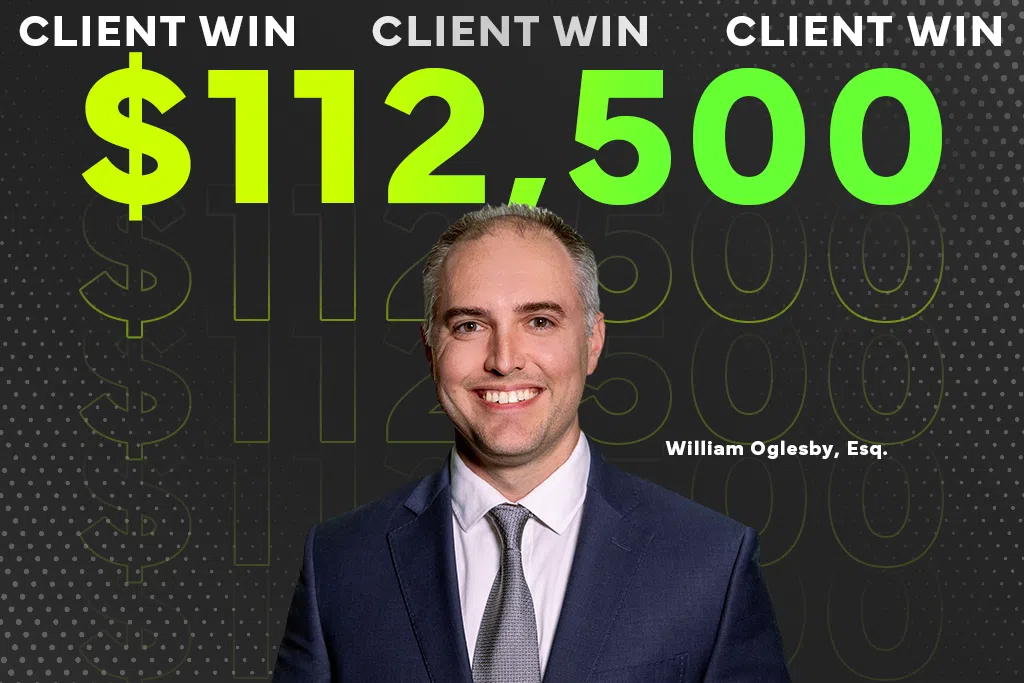Dicamba Cancer Lawsuit
Dicamba is an active ingredient in herbicides used in a variety of agricultural settings. A recent study published in 2020 by researchers from the National Institute of Health (NIH) found a correlation between dicamba product users and a higher risk of liver and intrahepatic bile duct cancer.
Home » Product Liability Attorneys » Dicamba Cancer Lawsuit
Baby Formula Stomach Problems
Boar’s Head Listeria Outbreak Attorneys
Chemical Hair Straighteners Cancer Lawsuit
Ezricare Eye Drops
Paraquat Side Effects Lawsuit
Premature Baby Formula NEC Lawsuit
Product Liability Attorneys
Product Liability FAQs
Roundup Cancer Lawsuit
Talcum Powder Cancer Lawsuit
Ultra-Processed Foods Lawsuit
What Is Dicamba?
Dicamba is a part of the chlorophenoxy family and falls within the class of herbicides known as synthetic auxins. Dicamba is used to selectively combat broadleaf weeds, which are weeds with wide leaves and a central vein that branches out into smaller veins (examples of common broadleaf weeds include dandelions and chickweed). Weed control products containing dicamba are often used on cotton, corn, soybean, wheat, and rice field crops and non-agricultural locations such as turf, ornamental, lawn, and garden use.
How Does Dicamba Work?
Dicamba enters plants through their leaves and roots. Once inside the plant, it mimics their naturally occurring auxins, the plant hormones that regulate plant processes such as protein synthesis and cell growth. As a result, dicamba causes abnormal growth and cell development and limits transpiration and photosynthesis within the plant. This leads to leaf drop, starvation, and eventual plant death; while not all plants are highly sensitive to dicamba, most will still respond to its application in this manner.
Issues With Dicamba’s Use
Dicamba is highly volatile, which means it easily vaporizes from a liquid into a gas. Once airborne it can remain in the air for up to 72 hours and thus has the potential to blow off the initial target crops and onto others. If dicamba reaches non-dicamba-tolerant crops, non-crop plants, or endangered species it can cause serious damage. New herbicide formulas containing dicamba claim to reduce its volatility, but data has shown that it continues to spread past its intended targets.
Types of Herbicides
There are two types of herbicides: pre- and post-emergent herbicides. Pre-emergent herbicides are applied to the soil before the weeds germinate, killing the weed’s seeds without damaging crops. Conversely, post-emergent herbicides are used on weeds that have already grown.
Dicamba Manufacturers and Products
The primary manufacturers of dicamba and dicamba-resistant crops are Monsanto (purchased by Bayer in 2018) and BASF. According to the National Pesticide Information Center, dicamba can currently be found in ~1,100 herbicide products. It is found in products used for both agricultural and home landscape applications, and sold under a variety of trade names such as Banvel, Diablo, Oracle, and Vanquish. Products containing dicamba may come in the form of liquids or granules; they may be concentrated or ready to use.
The History of Dicamba as a Herbicide
Dicamba has been known and registered for use as an herbicide since the late 1960s. However, it was not until the early 2000s when scientists began reporting that weeds were evolving resistance to Roundup’s active ingredient, glyphosate, that large-scale corporations began turning their eyes towards dicamba. Dicamba was historically used as a pre-emergent herbicide. However, after Monsanto rolled out their “Roundup Ready Xtend” genetically engineered seeds, created to tolerate both dicamba and glyphosate, the Environmental Protection Agency (EPA) approved three post-emergent “Over-the-Top” dicamba-based herbicides:
- XtendiMax (Monsanto)
- Engenia (BASF)
- Fexapan (Dupont)
Damage From Dicamba Usage
Very quickly, dicamba’s volatile nature and its tendency to drift off target became a problem not only for farmers who did not plant dicamba-resistant crops, but for nature reserves, local trees, and other non-crop plants. Restrictions on dicamba product usage were imposed but did not solve the problems. In 2020, the U.S. Ninth Circuit Court of Appeals stated that the EPA had downplayed evidence of the damage done by dicamba, and overturned the EPA’s approval of the three dicamba-based herbicides.
Risks of Dicamba Exposure
You are at risk of exposure if your skin either comes in contact directly with an herbicide with dicamba as an active ingredient, or with plants still wet from the herbicide’s application. You are also at risk of exposure through inhalation during herbicide application. Additionally, exposure is also possible from eating or smoking if you do not wash your hands after applying the herbicide.
Signs of Dicamba Toxicity in Humans
According to the National Pesticide Information Center, following the ingestion of dicamba, typical symptoms of poisoning may include:
- Vomiting
- Shortness of breath
- Lowered heart rate
- Loss of appetite
- Cyanosis
- Muscle spasms
- Hyperthermia
- Metabolic acidosis
- Renal failure
- Increase in certain liver enzymes
In very severe poisoning cases, gastrointestinal bleeding and entering a comatose state may occur. Inhalation, as opposed to ingestion, may cause dizziness, coughing, and irritation of the nose, pharynx, or chest.
Dicamba’s Links to Cancer
The connection between herbicides and cancer has been a significant topic of research and debate. As an herbicide, dicamba has been evaluated by various regulatory and health agencies regarding its safety and potential health effects. Factors such as the level and duration of exposure play a crucial role in the potential risk of developing cancer. Therefore, those who are regularly exposed to herbicides, such as agricultural workers, likely are at higher risk.
Is Dicamba a Carcinogen?
Major agencies such as the International Agency for Research on Cancer (IARC) or the U.S. Environmental Protection Agency (EPA) have not classified dicamba as a carcinogen.
Does Dicamba Cause Cancer?
Although in the past, studies have produced varied results as to whether or not dicamba exposure led to increased cancer risk, a recent study published in 2020 by researchers from the National Institutes of Health (NIH) found that dicamba was associated with an increased risk of cancer, in particular, liver cancer and intrahepatic bile duct cancer.
Liver and Bile Duct Cancer
Liver cancer is cancer that begins in your liver’s cells. Bile duct cancer, also called cholangiocarcinoma, begins in your body’s bile ducts—the network of tubes that begin in the liver and connect to the gallbladder and small intestine collecting bile.
Types of Liver and Bile Duct Cancer
The most common type of liver cancer is hepatocellular carcinoma. Bile duct cancers generally have two types: intrahepatic and extrahepatic bile duct cancer.
Intrahepatic Bile Duct Cancer
Also called intrahepatic cholangiocarcinomas, this type forms in the bile ducts inside the liver. This kind of bile duct cancer is also sometimes classified as a type of liver cancer.
Extrahepatic Bile Duct Cancer
The more common of the two types of bile duct cancer, this type forms in the bile ducts outside the liver. There are two sub-types of extrahepatic bile duct cancer: perihilar and distal bile duct cancer. Perihilar bile duct cancer is also called a Klatskin tumor or perihilar cholangiocarcinoma and affects the upper part of the bile duct. Distal bile duct cancer, on the other hand, is also known as extrahepatic cholangiocarcinoma and affects the lower part of the bile duct.
Symptoms of Liver and Bile Duct Cancer
General symptoms of liver and bile duct cancer are:
- Jaundice
- Itchy skin
- Nausea
- Fever
- Abdominal pain
- Loss of appetite
- Weight loss
- Dark urine
- Clay-colored/light-colored/greasy stools
While symptoms have been known to appear sooner, liver and bile duct cancer typically do not exude symptoms until later stages. If you think you are exhibiting any of the above symptoms you should talk to your doctor.
Treatment of Liver and Bile Duct Cancer
Which treatment you may receive depends on many factors, primarily if the cancer can be removed with surgery. For more details on the following list of treatment options, see the following page from the National Library of Medicine.
The following types of treatment to treat liver and bile duct therapy include:
- Surgery
- Radiation therapy
- Chemotherapy
- Immunotherapy
- Transplant
- Clinical trials
Why Are People Filing Dicamba Lawsuits?
Since the EPA approved post-emergent dicamba herbicides, hundreds of lawsuits have been filed for harm caused by dicamba and its tendency to drift onto neighboring fields and cause damage to non-resistant crops and other plants.
Accusations Against Bayer
Accusations against Bayer (who purchased Monsanto in 2018) focus primarily on the company’s knowledge of dicamba’s volatility. The lawsuits generally seek financial compensation for the damages caused by dicamba drift, including crop losses, reduced yields, and in some cases, punitive damages for the alleged willful misconduct by Monsanto/Bayer. Monsanto/Bayer has been accused of:
- Volatile product design
- Failing to warn of dicamba's risks
- Widespread damage to crops and livelihoods
- Manipulating regulatory processes
- Aggressive marketing practices
Bader Farms v. Monsanto Class Action Lawsuit
The 2020 Bader Farms v. Monsanto Federal Court Case is one of the most notable lawsuits relating to drift and damage. Bader Farms, the largest peach farm in Missouri, alleged that dicamba drift damaged their orchards. The federal court found that Monsanto was fully aware that dicamba herbicides had a high potential for drifting off target and still pushed for its sale, going as far as to encourage its teams to advocate for “Protection from your neighbor.”
Bader Farms was awarded $15 million in compensatory damages and $250 million (later reduced) in punitive damages, covering crop damage claims from 2015 through 2020.
Accusations Against the EPA
The EPA has undertaken a series of registrations, re-registrations, and restrictions in its effort to regulate dicamba. Consequently, these measures have triggered lawsuits against the EPA and its treatment of dicamba regulations.
Dicamba Environmental Lawsuits
Environmental organizations, including the National Family Farm Coalition and Center for Food Safety, have sued the EPA for approving dicamba formulations. They argue that the EPA’s approval violated federal regulations and that they did not adequately assess the environmental impact of dicamba.
Should You Consider a Dicamba Lawsuit?
Dicamba users who have been diagnosed with liver or bile duct cancer may be eligible to participate in a class action lawsuit against dicamba product manufacturers. If you believe you have a case against dicamba product manufacturers, ask yourself the following questions:
- Have you been diagnosed with liver or bile duct cancer, or any of its sub-types (intrahepatic cholangiocarcinoma, extrahepatic cholangiocarcinoma, perhilar cholangiocarcinoma, or Klatskin tumor)?
- Did you use dicamba once per year for at least 2 consecutive years?

If you answered yes to the above questions, contact Farah & Farah now for a free consultation. One of our highly trained attorneys specializing in product liability and medical cases can help determine if you have a case. You won’t pay anything unless your case is successful, so don’t wait to get the justice you deserve!
Co-counsel will be associated on these cases.

free case review
Related Pages
Client Testimonials

Related Blogs













